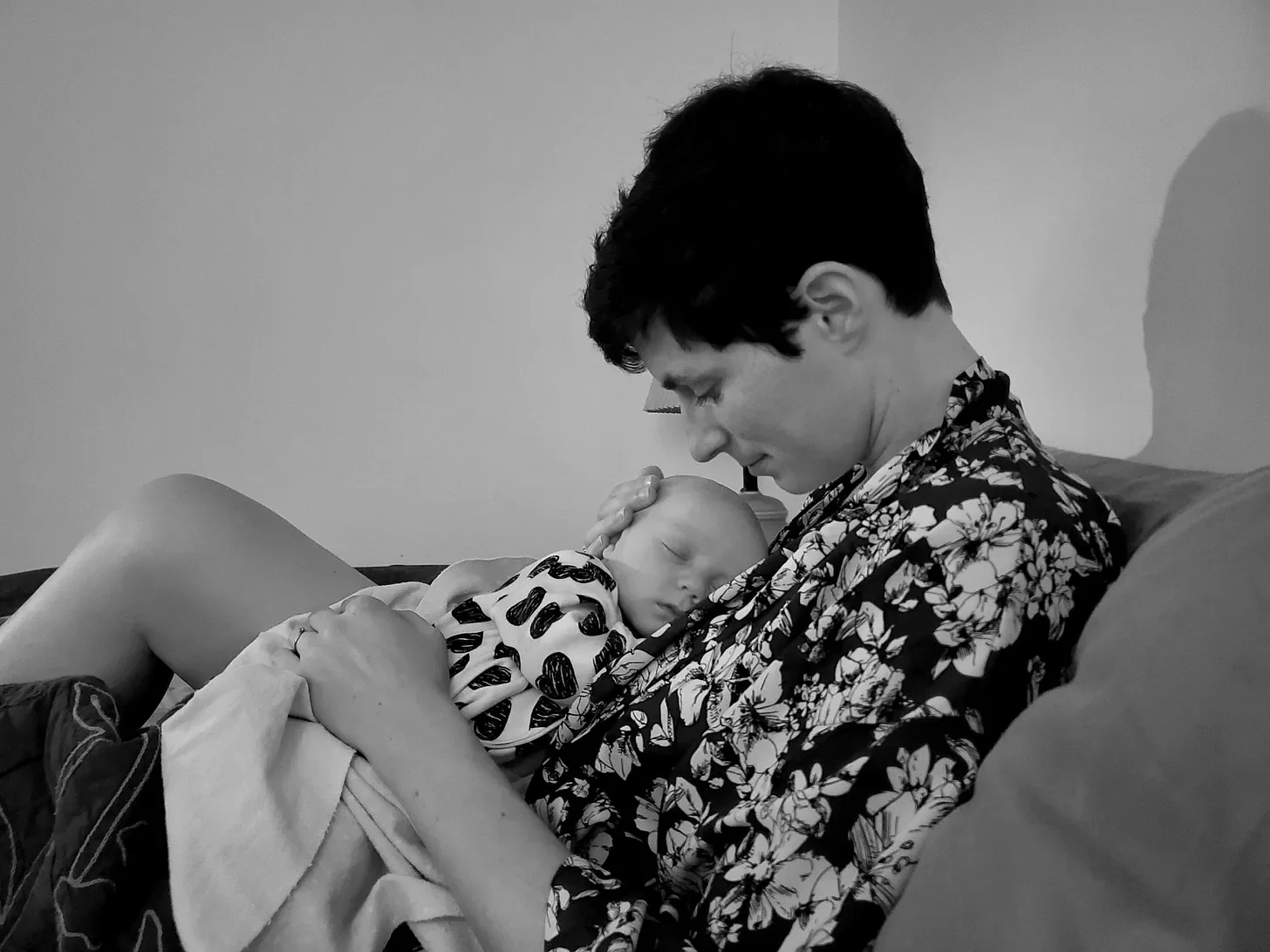Feel it to heal it: Somatic breathwork, misconceptions about trauma and "mental health," & healing from (C)PTSD
For 2 years now, I've been attending the occasional somatic breathwork class with a woman named Jesse Torgerson. I met Jesse through Eli Harrigan, who leads breathwork workshops here in Rochester.
Jesse is 78, carries herself like a relaxed 20-year-old, and has been teaching dynamic breathwork for the last 40 years. Her energy is inspiringly clear and coherent. I feel so lucky to have encountered an elder who's been living and sharing her magic for as long as she has.
It is not a coincidence that my (C)PTSD, activated after I had Goldie in 2022, began to improve when I started practicing breathwork. The more I incorporate this and other somatic discharging practices into my daily life, the more I can touch into the innate state of wellbeing that underlies all of the messy humanness of my existence.
Me and Goldie (2 months old), 2022. Photo by Jane Bryant.
Sometimes the sensations we experience can be so intense, it feels like they're going to be there forever. ♾️
While this may feel true, it doesn't have to be true. I once heard my friend Romy Toussaint refer to emotion as energy in motion.
That feeling of foreverness? The sensations that are scary, possibly even leading to dissociation? If we learn how to steward them through our bodies, those sensations - and the emotions that accompany them - can move through like clouds in the sky ⛅️. (Albeit with the strong possibility of crying, shaking, laughing, and other natural bodily responses to releasing fear and tension patterns🌧️🌪️). As we say in the bodywork & somatics world, Feel it to heal it.
In the mental health world, many clinicians and clients still think of trauma as a psychological event.
That's not an accurate perception, though it’s understandable, since PTSD lives under the mental health umbrella in the conventional Western/colonized schema.
Trauma is primarily a physiological process - it's the result of a our nervous systems being overwhelmed by an experience or an ongoing set of stressors.1
When the intensity of that overwhelm and the impulse to escape get stuck in our body, we hold that charge like a skipping record (Kimberly Johnson's metaphor). This affects our physiology, endocrine (hormonal) system, and habitual nervous system "settings." These factors result in a cascade of mental health challenges - not the other way around.
So if we want to truly address stress and trauma, operating from a body-up (rather than a mind-down) approach is an excellent idea.
We don't have to live in like skipping records, stuck in a state of freeze or fight. We can be doulas for our emotions (energy in motion), helping them through to completion.
Peter Levine, founder of the brilliant therapy modality Somatic Experiencing says,
"We possess instinctual resources along with all other animals that help us move through the immobilizing effects of trauma and come back into vitality.“
And we do. I’ve seen it in others, and I've experienced it myself. I’ve moved from full-blown PTSD that I wasn’t sure I’d survive to a state of general wellbeing over the last few years. Of course, there are ups and downs specific to being the sensitive, neurodivergent creature that I am. But I now have access to the full spectrum of my emotions, and am more balanced, strong, healthy, and joyful than I’ve been since I got pregnant in 2021. Thank Goddess.
We’re designed to heal. Yes, it takes determination, skill-building, an openness to connection, and heart — and it’s so worth it. You’re so worth it.
I'll leave you with this bite-sized (6 minutes) somatic breathwork practice...the breathwork pattern makes a fabulous microhabit.
Interested in working together 1:1 or having me in for a workshop at your workplace or organization?

